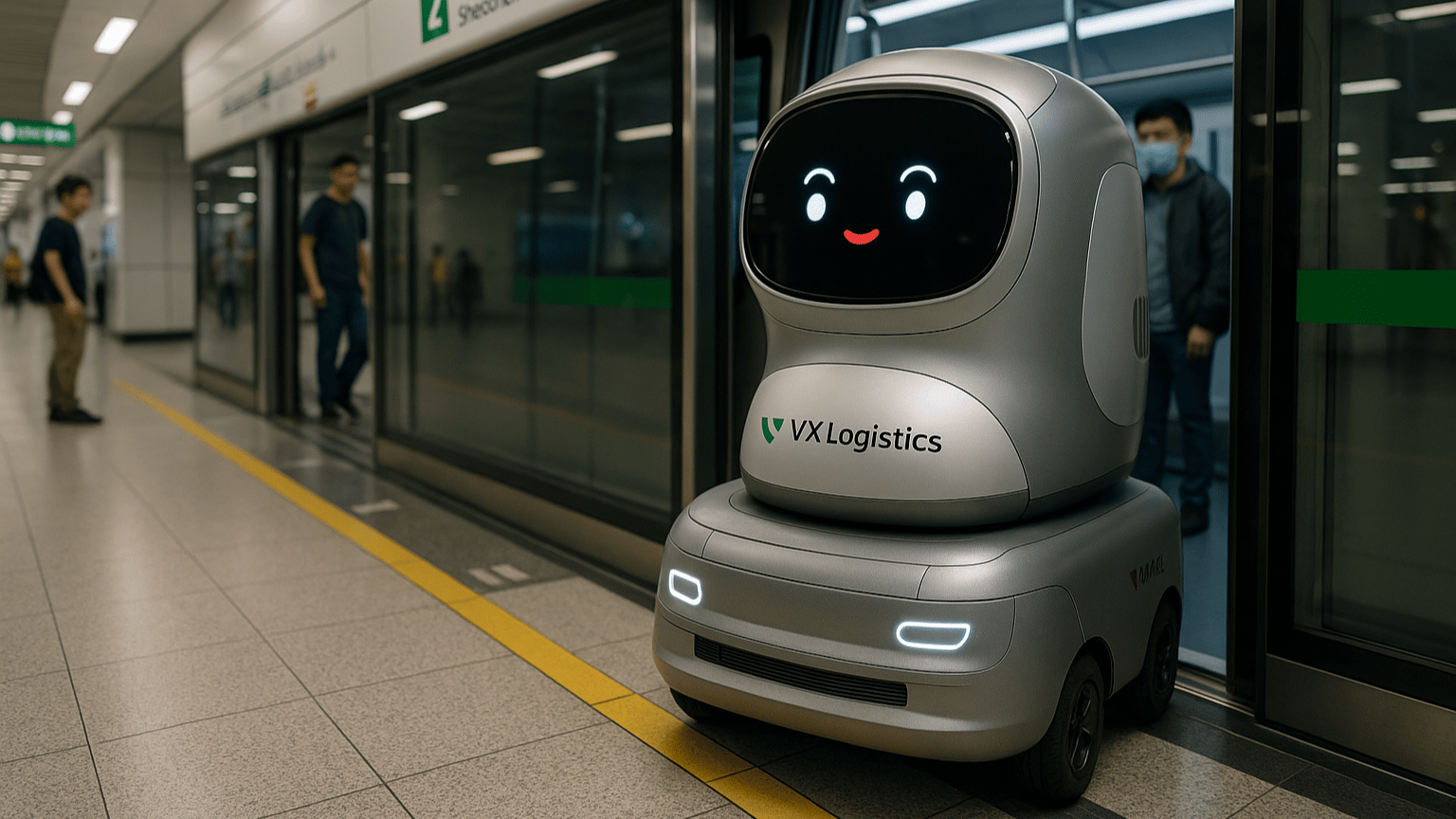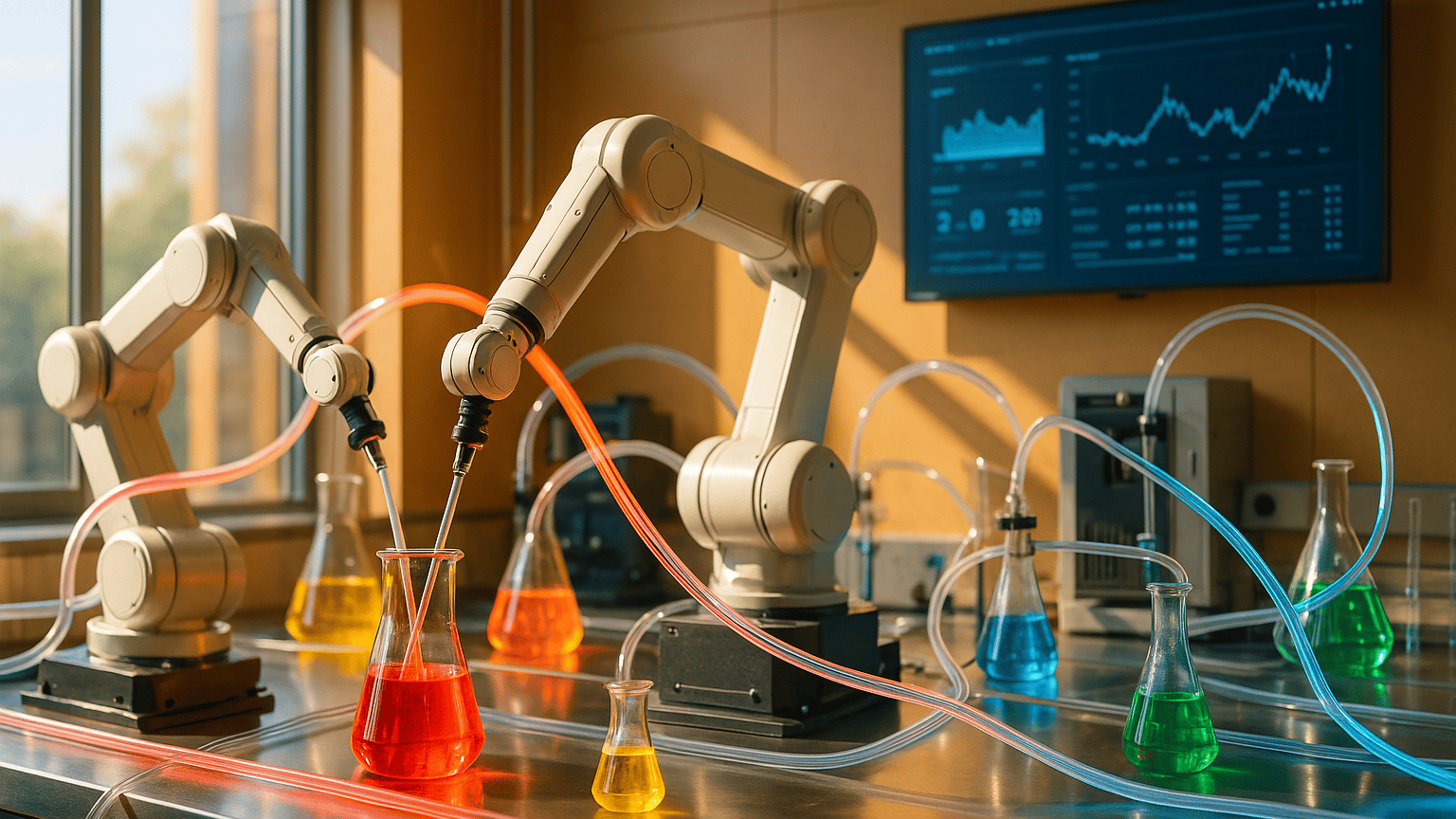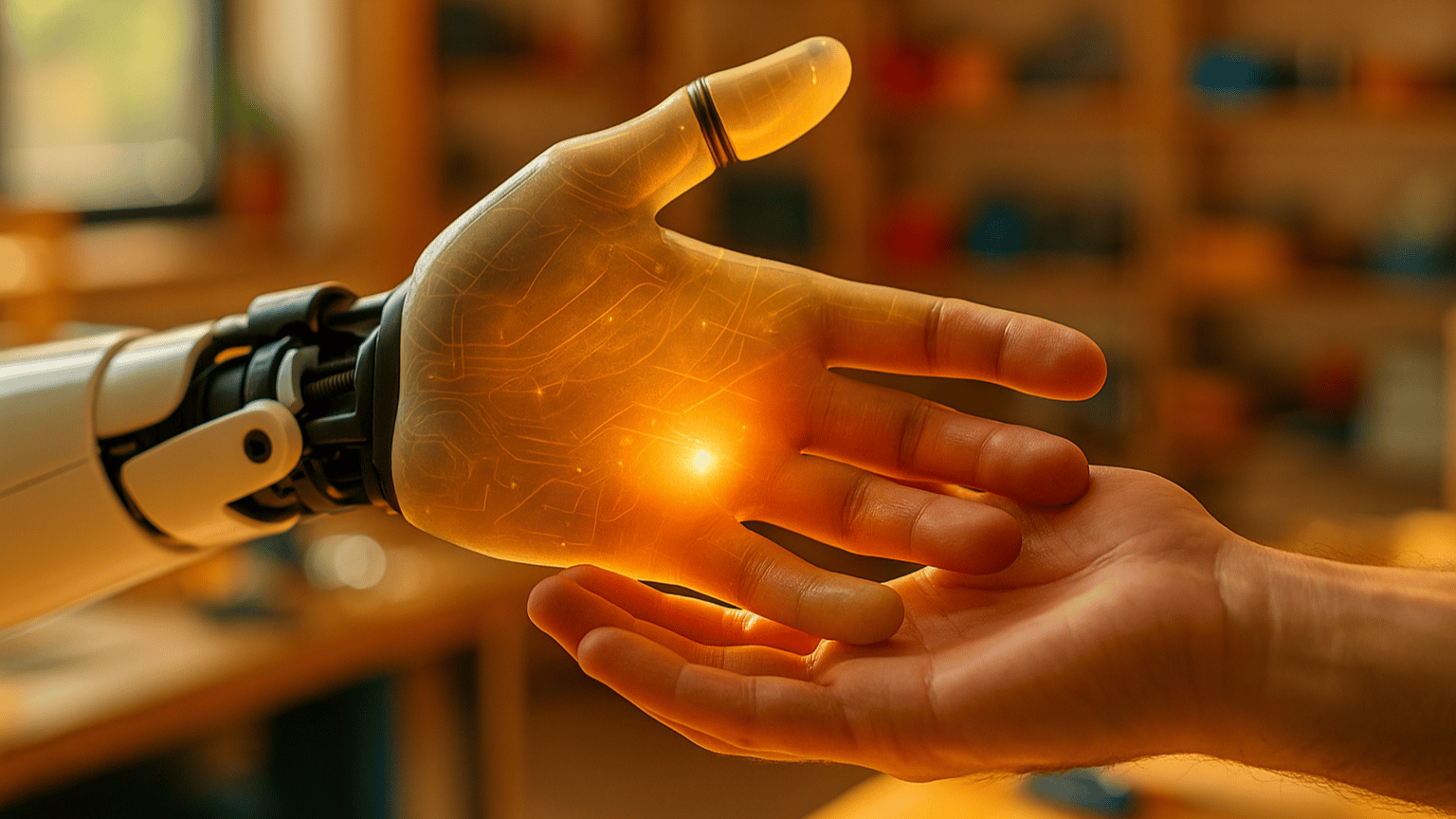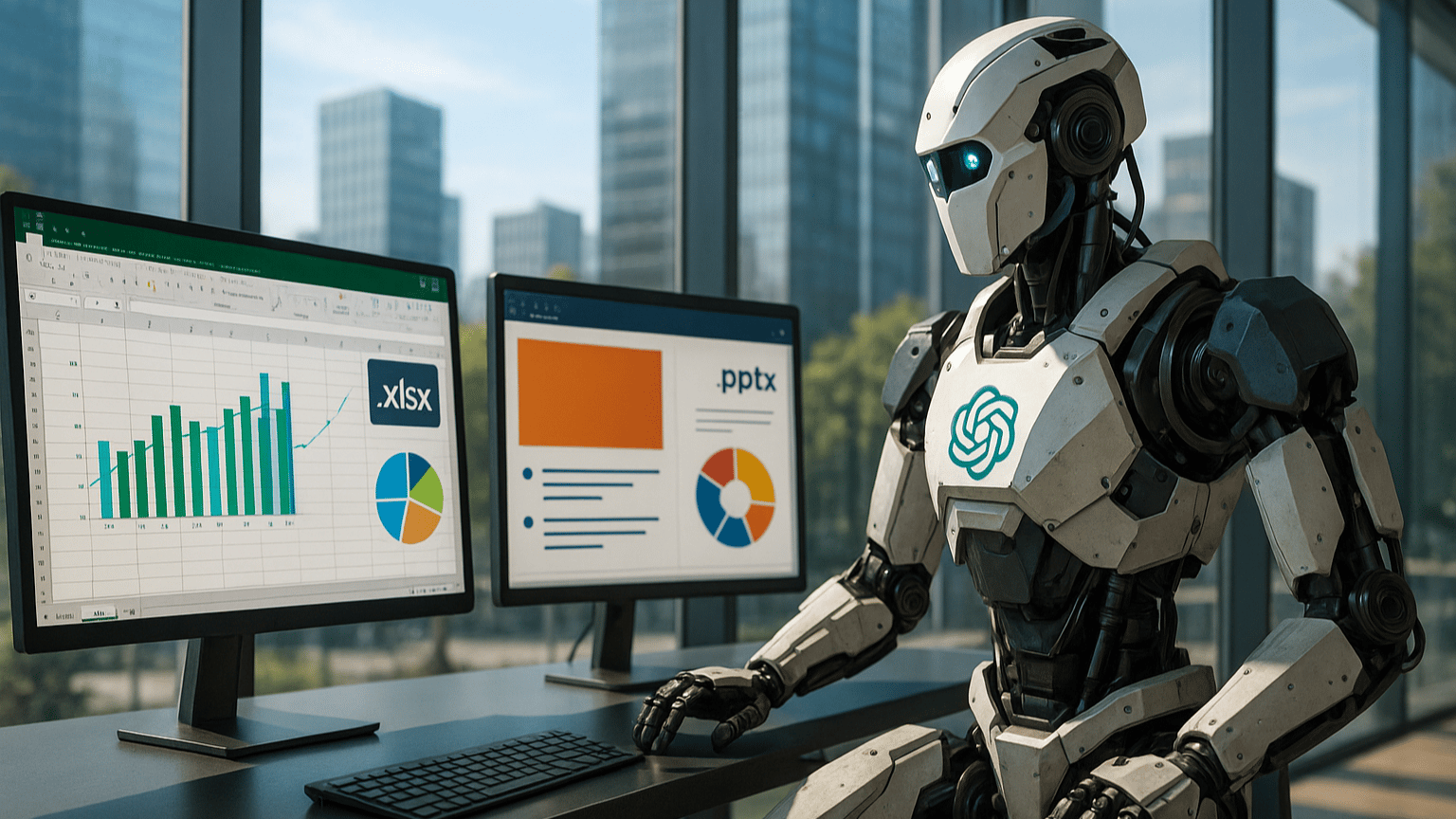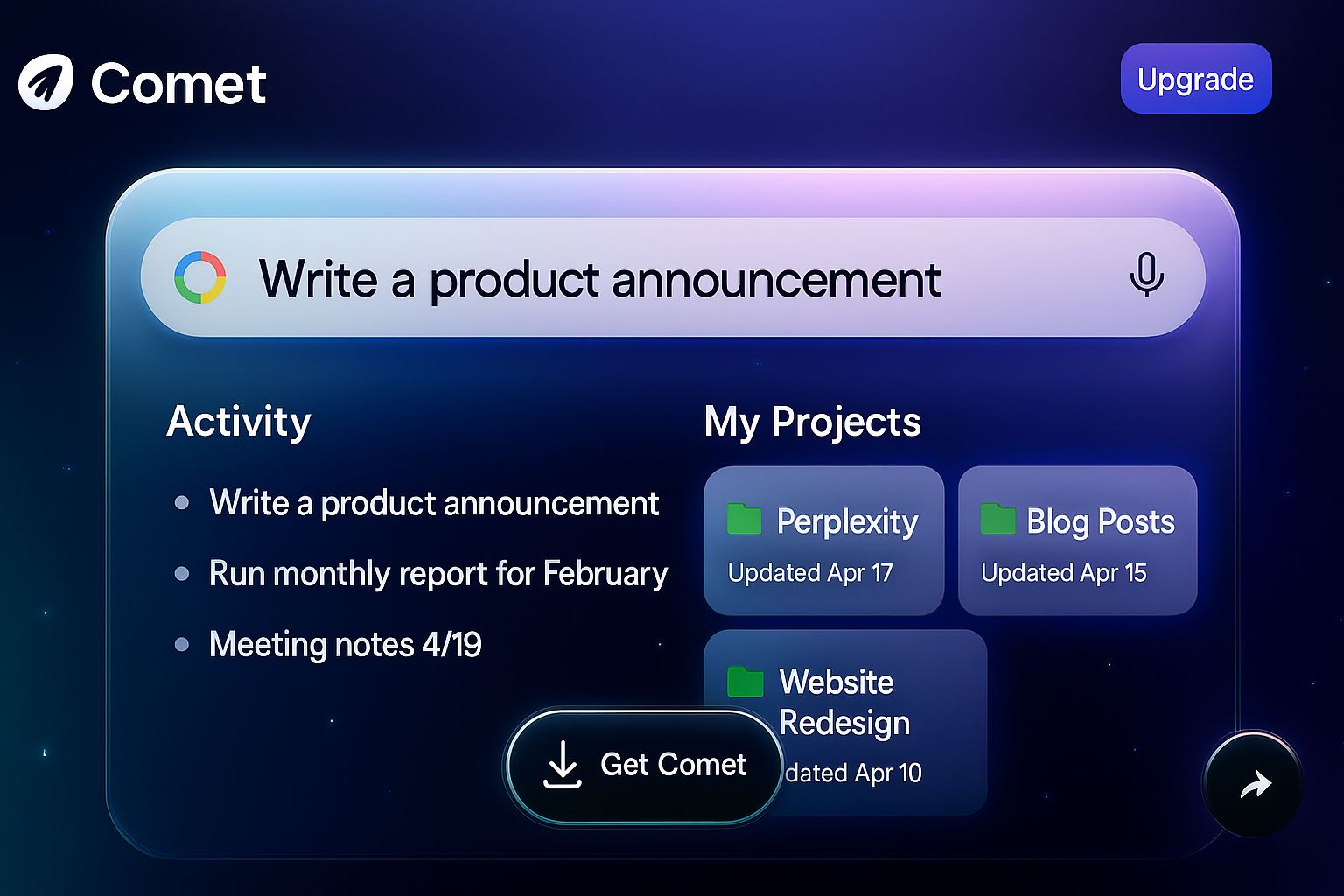- AI Pulse
- Posts
- 📊 ChatGPT Just Killed PowerPoint and Excel
📊 ChatGPT Just Killed PowerPoint and Excel
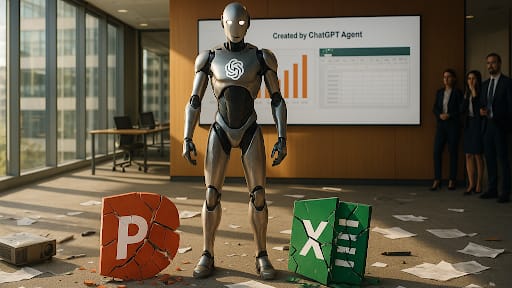
Hello There!
Shenzhen turned its subway into a moving logistics network. Penguin-shaped bots now board trains, ride solo, and restock shelves without human help. MIT gave robots skin that can feel touch and pain, while OpenAI is training agents that build office documents without apps. In the background, a U.S. lab ran nonstop experiments using an AI chemist faster than any team. And TSMC? It just broke profit records, thanks to chips powering all of the above.
Machines are gaining hands, memory, and momentum. But the quiet part? They’re not waiting for you to catch up.
In today’s AI Pulse
🐧 Robots Ride Shenzhen’s Subway to Deliver Snacks – A fleet of 41 bots now boards trains to restock 7-Eleven stores inside stations.
🧤 Robotic Skin Learns to Sense Pain and Pressure – MIT’s new gel skin lets robots detect texture and damage. It responds to touch like nerves.
🧪 AI Lab Runs Nonstop and Finds Faster Results – A lab in the U.S. used AI to test chemicals without pause.
🧩 ChatGPT Agents Create Files Without Any Apps – OpenAI is building agents that make decks and spreadsheets during chat.
🎨 AI Tool of the Day: Comet – Search, write, plan, and act on the same screen—without opening new tabs.
⚡ Quick Hits – IN AI TODAY
🛠️ Tool To Sharpen Your Skills – 🎓 AIGPE™ Certified Six Sigma Black Belt
🧠 Key Quote | Dr. Jimin Lee | Soft Robotics Researcher
Stay aware. These tools now move beside you, plan for you, and learn on their own. Quiet upgrades. Big changes.
TOP STORIES TODAY
🧠The Pulse
Dozens of robot couriers now ride Shenzhen’s subway to deliver snacks. They wear penguin-style shells and carry goods from station to store. No human leads them. They board trains, exit alone, and head to restock shelves. This is delivery without traffic, labor, or delays, and it has already begun.
📌The Download
Shenzhen just activated a robot-powered delivery system inside its subway. Forty-one penguin-shaped bots now ride the metro to restock 7-Eleven stores located across station platforms. Each robot is equipped with sensors, smart wheels, and indoor mapping software. They can board trains, take elevators, and cross platform gaps without help.
This is not a one-off stunt. It’s part of a real urban plan. The bots travel during non-peak hours, reducing human traffic jams. By skipping surface roads and courier labor, Shenzhen cuts restock time and avoids the usual chaos of last-mile delivery. The city’s goal is to use public transit as a middle-mile logistics backbone.
The project launched through VX Logistics as part of Shenzhen’s 2024 “Intelligent Robot Action Plan.” Officials aim to scale this by 2027. If the system proves reliable with snacks, future use could include medicine, parcels, and tools. Trains won’t simply carry people. They’ll carry the supply chain too.
💡What This Means for You
Robots will use the same systems you ride to work. That changes how goods move, but also how humans fit into the chain. The smart tools are not coming later. They’re already rolling beside you. You’ll need to keep pace, even when they roll on rails.
🧠The Pulse
An AI system now runs a research lab on its own. It ran chemical tests, tracked results, and made decisions 10 times faster than a human team. It worked without sleep or doubt. What it found could change how we discover new drugs, energy materials, and more.
📌The Download
A research team built a lab that runs without human help. They gave the system a simple goal: find better materials for energy use. It handled every part of the work including choosing samples, testing them, and logging the results. After each round, it used what it learned to decide what to try next. There were no pauses. No waiting for people to step in.
The lab moved fast because it didn’t need to stop. Every test helped shape the next one. That constant loop allowed the system to spot patterns and move forward without delay. In just a few days, it found results that would usually take a month. The entire setup was physical with real chemicals, real reactions, and no shortcuts.
This test happened inside a major U.S. research center. Now, labs in other countries are setting up similar systems. Some are using them to test drug compounds. Others are exploring cheaper battery parts. The process is spreading because it saves time and cuts waste. If more labs follow this path, scientific work could change into something faster, quieter, and always running in the background.
💡What This Means for You
AI is stepping into labs, workbenches, and research floors. If your job involves testing, modeling, or building new ideas, the pace is rising. You may soon find yourself working with a system that doesn’t pause, doubt, or get tired. Staying ready means adjusting how you think and how fast you move.
🧠The Pulse
A team just built robotic skin that actually feels. It reacts to pressure, texture, and even damage like human nerves. This breakthrough could change how machines care, heal, and move. It’s not about tech anymore. It’s about giving cold surfaces the warmth of sensation and seeing what they do with it.
📌The Download
Researchers at MIT and Seoul National University created a gel-based skin that mimics the sensory input of real human skin. It uses flexible layers embedded with sensors that detect pressure, vibration, and pain. When a robot hand is covered in this skin, it can tell the difference between brushing a feather and gripping a tool. The skin even signals when it's torn or damaged similarly to how you flinch from a cut.
The innovation combines soft robotics and machine learning. The material is stretchable, self-healing, and low-cost to produce. Each sensor sends touch data to an AI system. This helps machines feel pressure and also tell the difference between textures, shapes, and temperature. It could lead to better prosthetics and robots that know how to respond with care.
This development matters beyond labs. It opens doors for robots in nursing homes, disaster zones, and human-robot workspaces. With better senses, robots can pause when needed or hold things without crushing them. These tests show how physical sensing could make machines more useful and maybe more trusted.
💡What This Means for You
Machines that can feel will change how certain jobs get done. If a robot can tell when to stop or soften its grip, it can support work that needs precision, care, and timing. These tools may soon work beside you, not as code, but as hands that know when to wait.
🧠The Pulse
OpenAI is training ChatGPT agents that can build spreadsheets and slide decks during a chat. You won’t need Excel or PowerPoint to get the job done. Just say what you need, and the AI handles it. This moves AI one step closer to doing real work, without touching a single app.
📌The Download
OpenAI is working on new ChatGPT agents that can create and edit work documents, like spreadsheets or presentations, right inside the chat. These agents are being trained to handle specific tasks from start to finish. For example, if you ask for a financial report or a sales deck, the AI won’t just explain how to do it. It will build the file, organize the content, and format it properly in response to plain requests.
The idea is to remove the need for opening apps like Microsoft Excel, PowerPoint, or even Google Sheets. That saves time and lowers tool switching. According to The Information, OpenAI’s engineers are building these agents with longer memory and better planning skills. The goal is to let users stay in one window and let the work come to them.
This project is almost over and testing is complete. These agents will work with live data, follow prompts that include business logic, and make design choices based on intent. If rolled out widely, they could reduce daily reliance on traditional office software. Instead of toggling between tools, people could delegate entire tasks through one clear request.
💡What This Means for You
If you spend hours making decks or tracking numbers, AI may soon do it from a chat window. This is about speed, clarity, and letting you skip the click-heavy work. But to use these agents well, you need to speak clearly, think about outcomes, and stay involved. The tool is getting sharper. Stay ready.
AI TOOL OF THE DAY
💡 What It Is?
Comet is a smart browser made by Perplexity. It adds an assistant to your screen that helps you search, read, plan, and act, without opening extra tabs. It feels like a second brain while you browse.
🚀 Why Is It Trending?
Comet makes the browser useful again. People use it to write messages, find answers, plan events, and handle tasks on the same page. It’s quick, calm, and built to work the way people already do.
✅ What You Can Do With It?
You can highlight text for help, write faster replies, fill forms, or compare products. Ask it to save a booking, rewrite a paragraph, or search the web without jumping between tabs. It fits your day and keeps things simple.
⚡Quick Hits (60‑Second News Sprint)
Short, sharp updates to keep your finger on the AI pulse.
💰 TSMC Breaks Profit Records Thanks to AI Chips: TSMC (Taiwan Semiconductor Manufacturing Company) just reported its highest profit ever. Most of that came from demand for AI chips. Based in Taiwan, TSMC is the world’s leading chipmaker, building the core parts behind today’s top AI models. More tools need more chips, and TSMC is right in the middle of it.
📈 ByteDance Beats Meta in Early 2025 Revenue: ByteDance pulled ahead of Meta in Q1 earnings. Its AI-powered ads and tools brought in stronger returns. This puts China’s biggest tech firm ahead of a major U.S. rival. The global AI race just got more competitive.
🧠 Andrew Ng Stop Chasing Sci-Fi, Focus on Useful AI: Andrew Ng criticized the buzz around artificial general intelligence. He called it a distraction and urged teams to build things that solve real problems. His message: AI should help today, not chase imaginary futures.
🦾 NEURA Teams Up with GFT to Build Smarter Robots: NEURA Robotics and GFT are working on machines that can think and move. They’re blending AI software with physical robots. These systems are being built for real jobs such as on factory floors, in labs, and beyond.
TOOL TO SHARPEN YOUR SKILLS
📈Improve Processes. Drive Results. Get Certified.
Learn how to turn customer needs into design goals. This course shows you how to use QFD to connect the voice-of-customer to real outcomes. Enroll now.
KEY QUOTES AND STRATEGIC INSIGHTS
"Robots with touch won’t just change how machines feel, they’ll change how we trust them."
— Dr. Jimin Lee, Soft Robotics Researcher, Seoul National University
That’s it for today’s AI Pulse!We’d love your feedback, what did you think of today’s issue? Your thoughts help us shape better, sharper updates every week. |
🙌 About Us
AI Pulse is the official newsletter by AIGPE™. Our mission: help professionals master Lean, Six Sigma, Project Management, and now AI, so you can deliver breakthroughs that stick.
Love this edition? Share it with one colleague and multiply the impact.
Have feedback? Hit reply, we read every note.
See you next week,
Team AIGPETM

